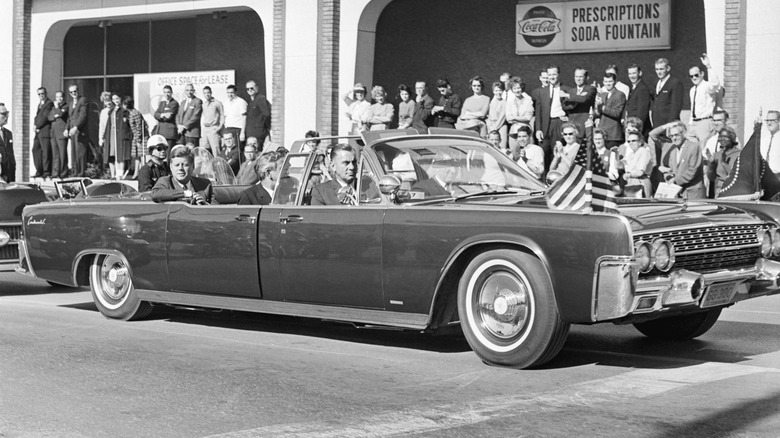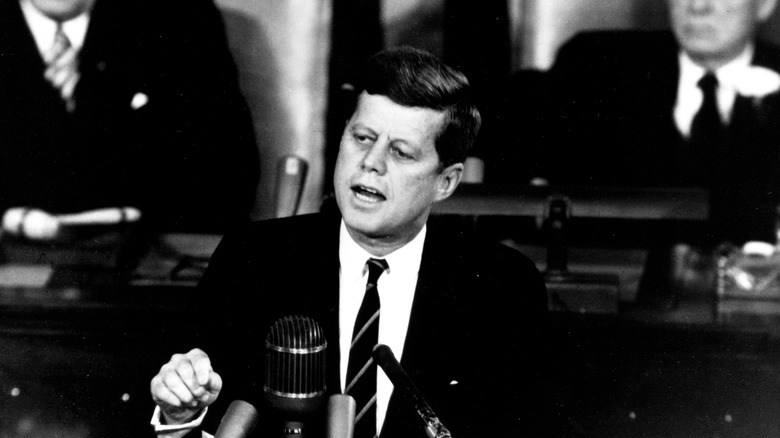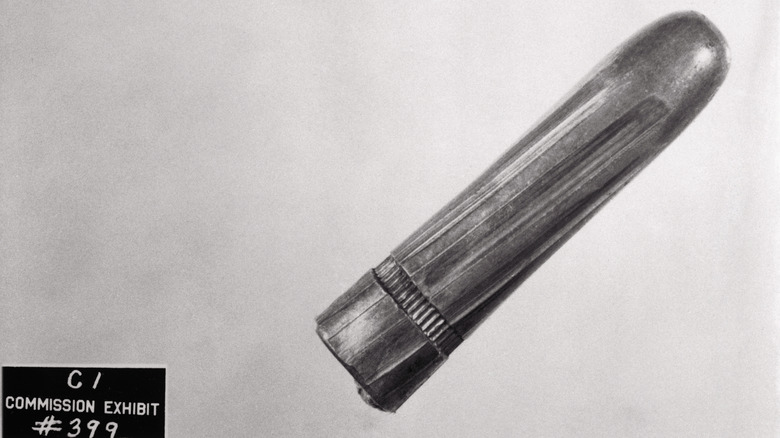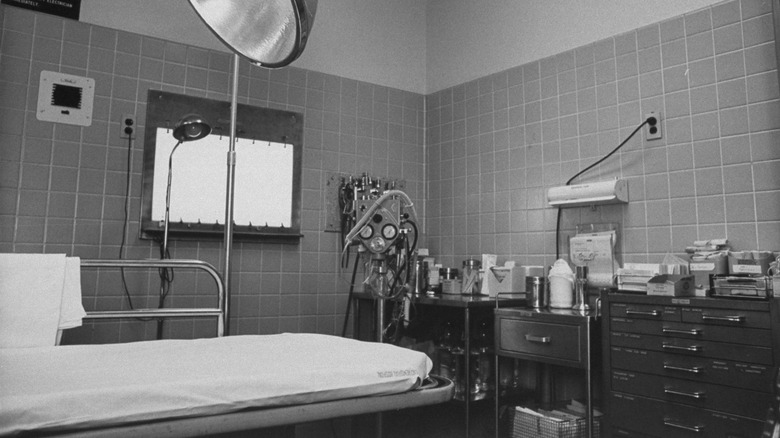Everything We Know About The New JFK Assassination Revelations
The assassination of President John F. Kennedy as he rode in a motorcade with his wife Jackie through Dallas, Texas on November 22, 1963, is one of the defining moments of 20th-century American history. Kennedy's murder was one of those time-stopping news stories: as the old saying goes, everyone who was alive at the time can remember just where they were when they heard the news that the president had been shot.
The nation was gripped as news broke that the security services had apprehended the gunman, ex-Marine Lee Harvey Oswald, who had seemingly fired multiple rifle rounds from the window of the nearby Texas School Book Depository. However, Oswald was shot and killed before his trial, meaning he never received justice or made his exact motives known on the stand. Ever since, the nation has been divided as to what exactly happened that day and who was responsible, with the findings of the subsequent Warren Commission continuing to be scrutinized even today.
Over the years countless conspiracy theorists have studied the footage, talked to the people who were there, and examined the location firsthand, and while many versions of what actually happened that day have since emerged, none have successfully supplanted the official explanation that Kennedy was murdered by the deranged Oswald, who was acting alone. But in September 2023, a new detail emerged from someone who was there at the scene, ex-Secret Service agent Paul Landis, that arguably challenges how the assassination has been interpreted for the last six decades.
Who is Paul Landis?
Paul Landis (pictured, left, with co-author James Robenalt) was born in Ohio and studied geology at Ohio Wesleyan University, from which he graduated in 1957. He was first admitted to the Secret Service at the age of 24, after which followed a period of intense training, according to the Akron Beacon Journal. He soon found himself serving an integral role in protecting the first family at the time, that of President Dwight Eisenhower.
After John F. Kennedy won the 1960 election, Landis found himself at the auguration and remained a constant vigilant presence around the president, the first lady, and their children. He was in his late 20s when he was assigned to protect the Kennedys as their motorcade drove through the streets of Dallas. He was positioned on the running board of the trailing security vehicle directly behind the president and first lady, and was therefore one of the closest witnesses to the shooting as it unfolded, as well as one of the first people to rush toward John F. Kennedy after he slumped down from the impact of the bullets.
After the horror of the assassination and the trauma he suffered as a result, Landis left the Secret Service shortly afterward, relocating from Washington altogether and moving on with his life. Apart from two written reports he gave to the Warren Commission in the aftermath of the slaying, he has remained largely silent regarding what he witnessed that day. That was until 2023 when, at the age of 88, Landis stepped back into the public eye with a memoir that revealed some previously unknown details.
Landis' account
Per The New York Times, Landis claims to remember clearly the chaos on Dealey Plaza after the first shots rang out and those traveling with the president's motorcade realized that they were under attack.
But what has raised eyebrows about the former security agent's recollections is a small but hugely significant detail. In his memoir, Landis states that after the motorcade sped the fatally wounded president to hospital, the agent discovered a bullet jutting out of the seat where Kennedy had been shot. In what seems to have been a reflex action, Landis pocketed the bullet — which he knew was important evidence — and later, when he went indoors to view the president's body, placed it on his gurney beside Kennedy's foot.
According to Landis, the position of the bullet in the car suggested that it had struck Kennedy in the back but failed to enter his body entirely; as noted by James Robenalt, a lawyer and historian who collaborated with Landis on his memoir, "The Final Witness," published by Chicago Review Press, the bullet came from an old World War II rifle, and it is conceivable that it may not have been fully loaded with gunpowder (via Vanity Fair).
What if it's true?
So what are the repercussions of Paul Landis' claim that he found an intact bullet and placed it on the dead president's gurney is true? His co-writer James Robenalt has spoken about the accuracy of Landis' memory and claims he is convinced by his testimony, which he thinks is one of the most significant revelations regarding the assassination in over half a century. "If what he says is true, which I tend to believe, it is likely to reopen the question of a second shooter ... If the bullet we know as the magic or pristine bullet stopped in President Kennedy's back, it means that the central thesis of the Warren Report, the single-bullet theory, is wrong" (via The New York Times).
The single-bullet theory argues that one bullet that hit Kennedy passed through his body and struck Gov. John B. Connally Jr., causing him multiple injuries. For many, the commission's findings — which were based on the presence of a bullet near Connally which was believed to have exited one of his wounds — have always seemed far-fetched. Landis believes that the bullet found by Connally was that he had placed near Kennedy, which arguably opens up the possibility of a second gunman.
However, skeptics argue the length of time that has elapsed since then means Landis' account is probably unreliable. Indeed, no contemporaneous accounts of the murder or its aftermath place him in the room with the president's body, and Landis' own written reports from the time contradict his later version. Nevertheless, it seems the debate over what happened that day isn't set to end anytime soon.



